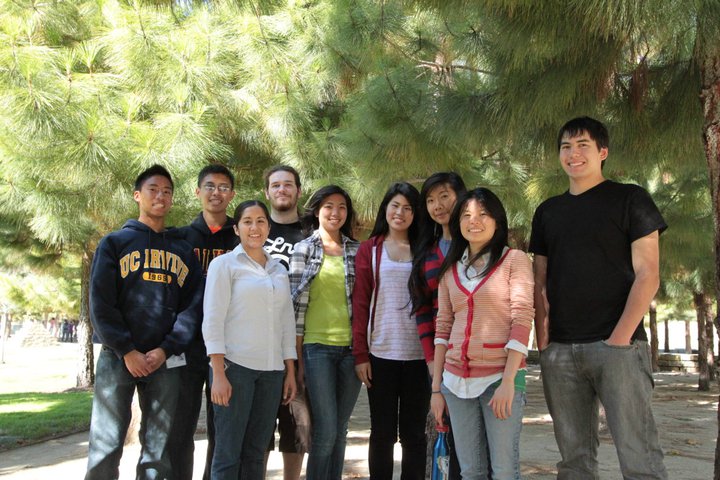Team:UCSF/Project
From 2011.igem.org
(Prototype team page) |
(→Results) |
||
| (5 intermediate revisions not shown) | |||
| Line 1: | Line 1: | ||
| - | |||
| - | |||
| - | |||
| - | |||
| - | |||
| - | |||
| - | |||
| - | |||
| - | |||
| - | |||
| - | |||
| - | |||
| - | |||
| - | |||
| - | |||
| - | |||
| - | |||
| - | |||
{|align="justify" | {|align="justify" | ||
|You can write a background of your team here. Give us a background of your team, the members, etc. Or tell us more about something of your choosing. | |You can write a background of your team here. Give us a background of your team, the members, etc. Or tell us more about something of your choosing. | ||
| Line 46: | Line 28: | ||
| - | + | Many species of yeast and bacteria readily form biofilms as a means of survival. These biofilms are composed of cells that aggregate to each other or a surface. This year, the UCSF iGEM team has researched how to develop artificial biofilms via yeast cell surface display. We are synthetically engineering S. cerevisiae to form biofilm-like interactions that we can control by inducing display of adhesive proteins on the surface. The surface display system that we are using takes advantage of the natural yeast mating receptors, Aga1 and Aga2. We have chosen adhesive proteins from a variety of other organisms in order to create a range of interactions between the cells. The synthetic cell adhesion and interactions we are creating can serve as a model for biofilm formation and other types of cell-cell adhesion. | |
| - | + | ||
| - | + | ||
| - | + | ||
| - | + | ||
| - | + | ||
| - | + | ||
| - | + | ||
| - | + | ||
| - | + | ||
| - | + | ||
| - | + | ||
| - | + | ||
| - | + | ||
| - | + | ||
| - | + | ||
| - | + | ||
| - | + | ||
| - | + | ||
| - | + | ||
| - | + | ||
| - | + | ||
| - | + | ||
| - | + | ||
| - | + | ||
| - | + | ||
| - | + | ||
| - | + | ||
| - | + | ||
| - | + | ||
| - | + | ||
| - | + | ||
| - | + | ||
Latest revision as of 19:02, 9 September 2011
| You can write a background of your team here. Give us a background of your team, the members, etc. Or tell us more about something of your choosing. | |
|
Tell us more about your project. Give us background. Use this is the abstract of your project. Be descriptive but concise (1-2 paragraphs) | |
| Team Example |
| Home | Team | Official Team Profile | Project | Parts Submitted to the Registry | Modeling | Notebook | Safety | Attributions |
|---|
Many species of yeast and bacteria readily form biofilms as a means of survival. These biofilms are composed of cells that aggregate to each other or a surface. This year, the UCSF iGEM team has researched how to develop artificial biofilms via yeast cell surface display. We are synthetically engineering S. cerevisiae to form biofilm-like interactions that we can control by inducing display of adhesive proteins on the surface. The surface display system that we are using takes advantage of the natural yeast mating receptors, Aga1 and Aga2. We have chosen adhesive proteins from a variety of other organisms in order to create a range of interactions between the cells. The synthetic cell adhesion and interactions we are creating can serve as a model for biofilm formation and other types of cell-cell adhesion.
 "
"

